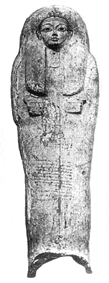|
Who was Seti I
?
Like his father, Ramesses
I, Seti was a military commander and on becoming pharaoh he set
out to restore Egypt's empire back to the vast glory days of
the Tuthmosis kings almost a century before.
Inscriptions on Karnak show the details of him campaigning into
Palestine and Syria. He took 20,000 men and reoccupied abandoned
Egyptian posts and garrisoned cities. He made peaceful terms
with the Hittites and then continued to take control of coastal
areas along the Mediterranean, he also continued to fight across
Palestine.
A second campaign led him to Kadesh (a stela commerated his victory
there), his son and heir Ramesses II campaigned with him.
Within Egypt itself Seti I had many building projects, amongst
others these included : Karnak (converted the court between 2nd
and 3rd pylons into a huge Hypostyle Hall, and at Abydos he built
a vast mortuary complex.
His Chief Wife was Tuya who was also the mother of Ramesses II,
as well as two daughters - Tia and Hentmire.
The mummy of Seti I indicates that he was in his sixties when
he died. Buried with him in his original tomb were over 700 ushabti
figures. His tomb in the Valley of the Kings was the most splendid
(both in size and decoration) of all the kings buried there.
|






